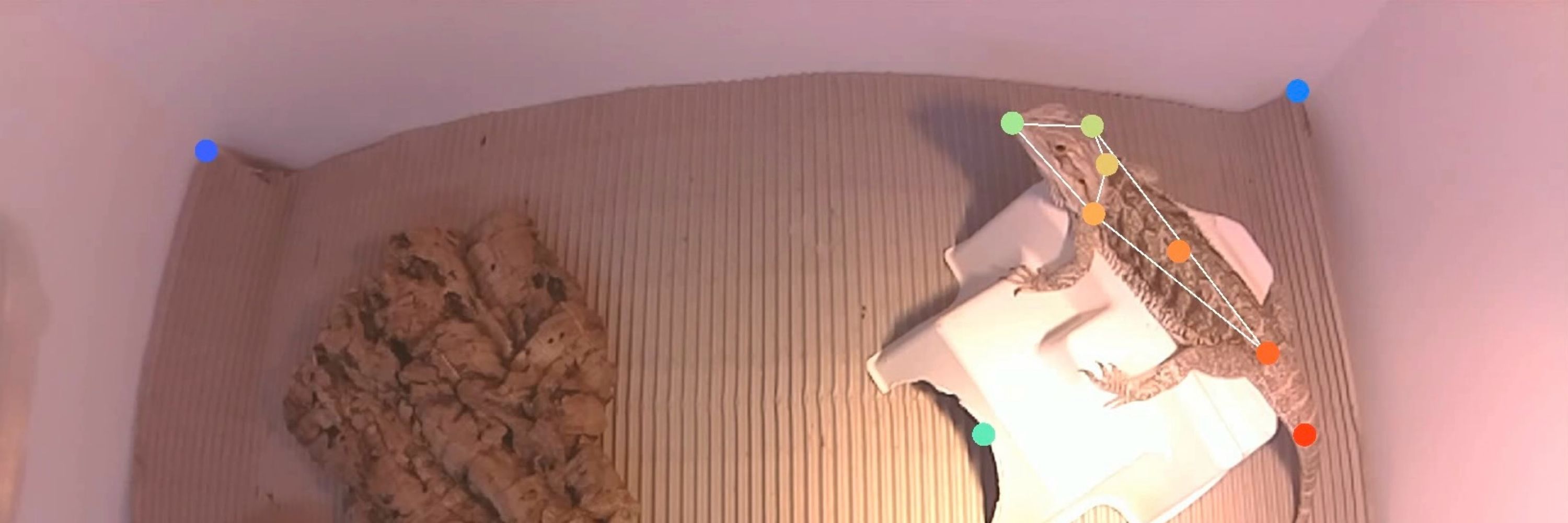
Felix Baier
@felixbaier.bsky.social
Natural behavior, brain evolution, & ecological change, with a focus on wild 🐭 and 🦎. Currently a Postdoc @mpibrain.bsky.social; PhD from @harvardmcb.bsky.social. he/him
felixbaier.github.io
felixbaier.github.io
🧵7/8 When referees requested loss-of-function expts, @arnausd.bsky.social and Chen Liu jumped in and carried us to the finish line.
They found that chemogenetic inhibition of dPAG during looming delays escape onset in P. maniculatus, such that the species appear almost identical!
They found that chemogenetic inhibition of dPAG during looming delays escape onset in P. maniculatus, such that the species appear almost identical!

July 23, 2025 at 3:06 PM
🧵7/8 When referees requested loss-of-function expts, @arnausd.bsky.social and Chen Liu jumped in and carried us to the finish line.
They found that chemogenetic inhibition of dPAG during looming delays escape onset in P. maniculatus, such that the species appear almost identical!
They found that chemogenetic inhibition of dPAG during looming delays escape onset in P. maniculatus, such that the species appear almost identical!
🧵6/8 To test for a causal role of the dPAG, I joined Katja in Belgium, and with help from undergrad Julie Murmann, we set up optogenetics in these wild mice.
Remarkably, dPAG activation alone triggered similar species differences - suggesting sufficiency of this brain region for the behavior.
Remarkably, dPAG activation alone triggered similar species differences - suggesting sufficiency of this brain region for the behavior.
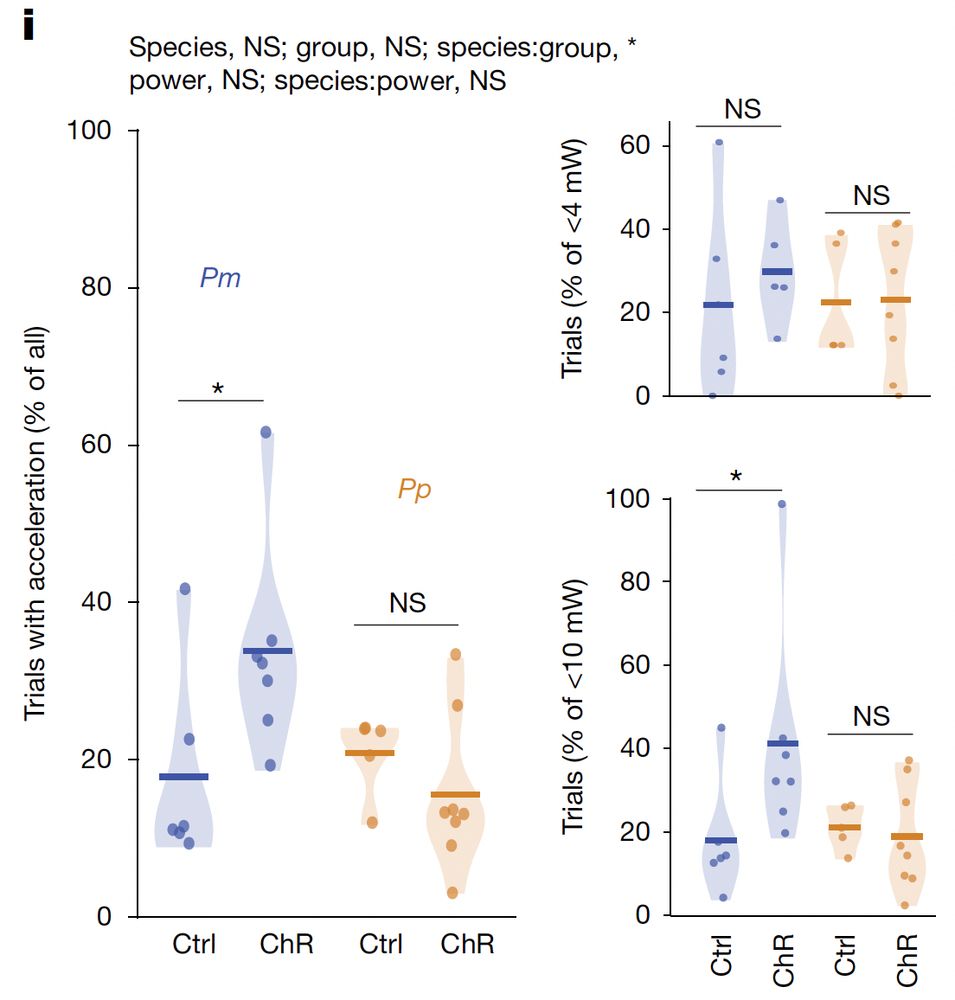
July 23, 2025 at 3:06 PM
🧵6/8 To test for a causal role of the dPAG, I joined Katja in Belgium, and with help from undergrad Julie Murmann, we set up optogenetics in these wild mice.
Remarkably, dPAG activation alone triggered similar species differences - suggesting sufficiency of this brain region for the behavior.
Remarkably, dPAG activation alone triggered similar species differences - suggesting sufficiency of this brain region for the behavior.
🧵5/8 To dissect further, we shipped mice to Belgium and teamed up with the @farrowlab.bsky.social: @katjareinhard.bsky.social, now w/ her own lab, figured out how to record from escaping mice - and with @bramnuttin.bsky.social, found that dPAG neurons in the two species encode behavior differently.
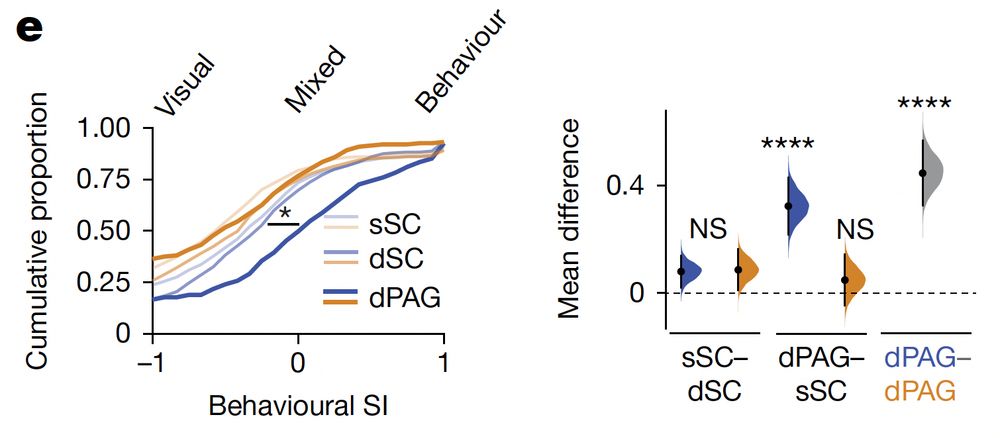
July 23, 2025 at 3:06 PM
🧵5/8 To dissect further, we shipped mice to Belgium and teamed up with the @farrowlab.bsky.social: @katjareinhard.bsky.social, now w/ her own lab, figured out how to record from escaping mice - and with @bramnuttin.bsky.social, found that dPAG neurons in the two species encode behavior differently.
🧵4/8 Indeed, by staining for FOS in mice exposed to visual threat, we found that retinorecipient superior colliculus is activated in both species.
However, the periaqueductal gray (dPAG), known for its role in escape, was activated much less in P. polionotus, even when they strongly escaped!
However, the periaqueductal gray (dPAG), known for its role in escape, was activated much less in P. polionotus, even when they strongly escaped!
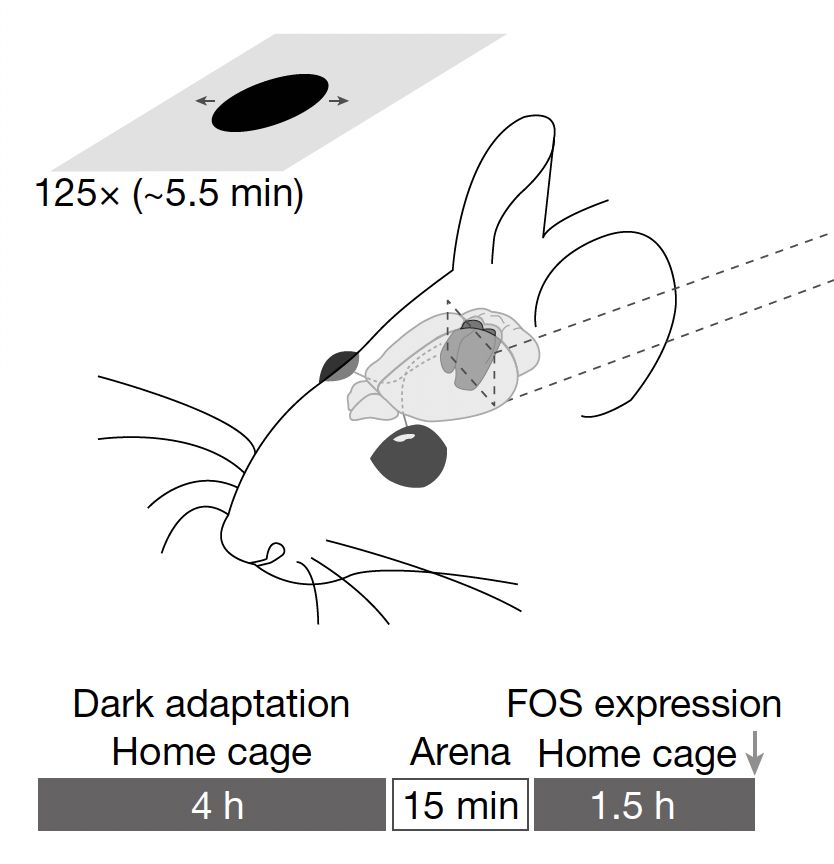
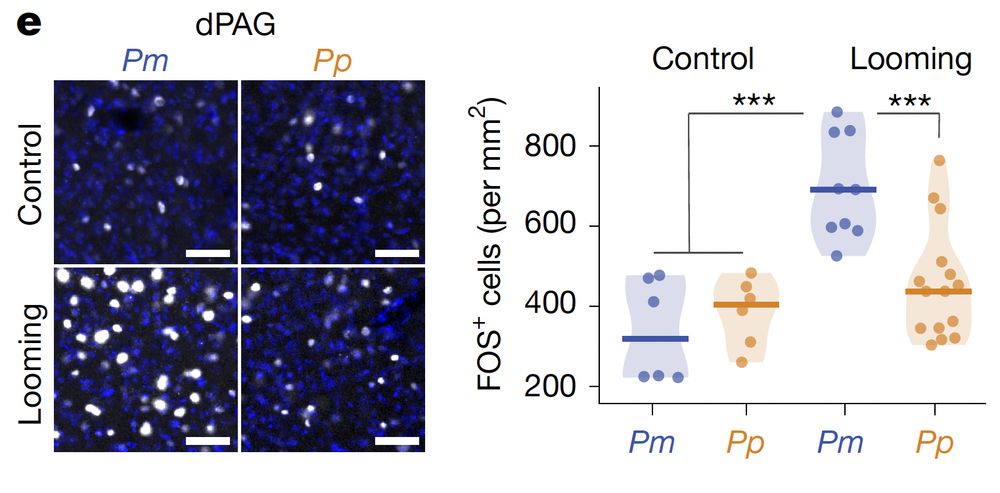
July 23, 2025 at 3:06 PM
🧵4/8 Indeed, by staining for FOS in mice exposed to visual threat, we found that retinorecipient superior colliculus is activated in both species.
However, the periaqueductal gray (dPAG), known for its role in escape, was activated much less in P. polionotus, even when they strongly escaped!
However, the periaqueductal gray (dPAG), known for its role in escape, was activated much less in P. polionotus, even when they strongly escaped!
🧵3/8 We were curious: where did evolution act in the brain to adjust behavior?
To narrow down our search, we exposed mice to an auditory stimulus – and observed the same behavioral differences.
This suggested a mechanism downstream of sensory detection, relevant across modalities.
To narrow down our search, we exposed mice to an auditory stimulus – and observed the same behavioral differences.
This suggested a mechanism downstream of sensory detection, relevant across modalities.

July 23, 2025 at 3:06 PM
🧵3/8 We were curious: where did evolution act in the brain to adjust behavior?
To narrow down our search, we exposed mice to an auditory stimulus – and observed the same behavioral differences.
This suggested a mechanism downstream of sensory detection, relevant across modalities.
To narrow down our search, we exposed mice to an auditory stimulus – and observed the same behavioral differences.
This suggested a mechanism downstream of sensory detection, relevant across modalities.
🧵2/8 Inspired by work in lab mice, Hopi and I asked how wild-derived deer mice respond to visual threat.
With help from undergrad Tori Tong, we discovered robust variation: while P. maniculatus escaped, much like Mus, sister species P. polionotus, from open habitats in Florida, briefly froze!
With help from undergrad Tori Tong, we discovered robust variation: while P. maniculatus escaped, much like Mus, sister species P. polionotus, from open habitats in Florida, briefly froze!
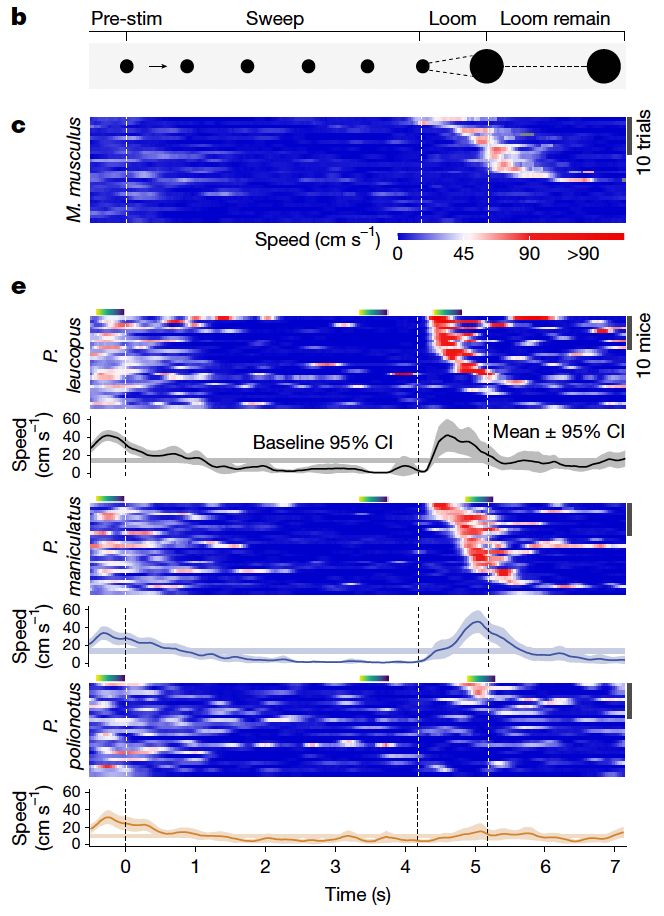
July 23, 2025 at 3:06 PM
🧵2/8 Inspired by work in lab mice, Hopi and I asked how wild-derived deer mice respond to visual threat.
With help from undergrad Tori Tong, we discovered robust variation: while P. maniculatus escaped, much like Mus, sister species P. polionotus, from open habitats in Florida, briefly froze!
With help from undergrad Tori Tong, we discovered robust variation: while P. maniculatus escaped, much like Mus, sister species P. polionotus, from open habitats in Florida, briefly froze!
🚨Very happy that my PhD work is now out in @nature.com!
We discovered that evolution, by acting in the midbrain, shifted the threshold to escape in Peromyscus mice, to fine-tune defensive strategies in different environments
www.nature.com/articles/s41...
This was a truly collaborative effort! 🧵⬇️
We discovered that evolution, by acting in the midbrain, shifted the threshold to escape in Peromyscus mice, to fine-tune defensive strategies in different environments
www.nature.com/articles/s41...
This was a truly collaborative effort! 🧵⬇️
July 23, 2025 at 3:06 PM
🚨Very happy that my PhD work is now out in @nature.com!
We discovered that evolution, by acting in the midbrain, shifted the threshold to escape in Peromyscus mice, to fine-tune defensive strategies in different environments
www.nature.com/articles/s41...
This was a truly collaborative effort! 🧵⬇️
We discovered that evolution, by acting in the midbrain, shifted the threshold to escape in Peromyscus mice, to fine-tune defensive strategies in different environments
www.nature.com/articles/s41...
This was a truly collaborative effort! 🧵⬇️

